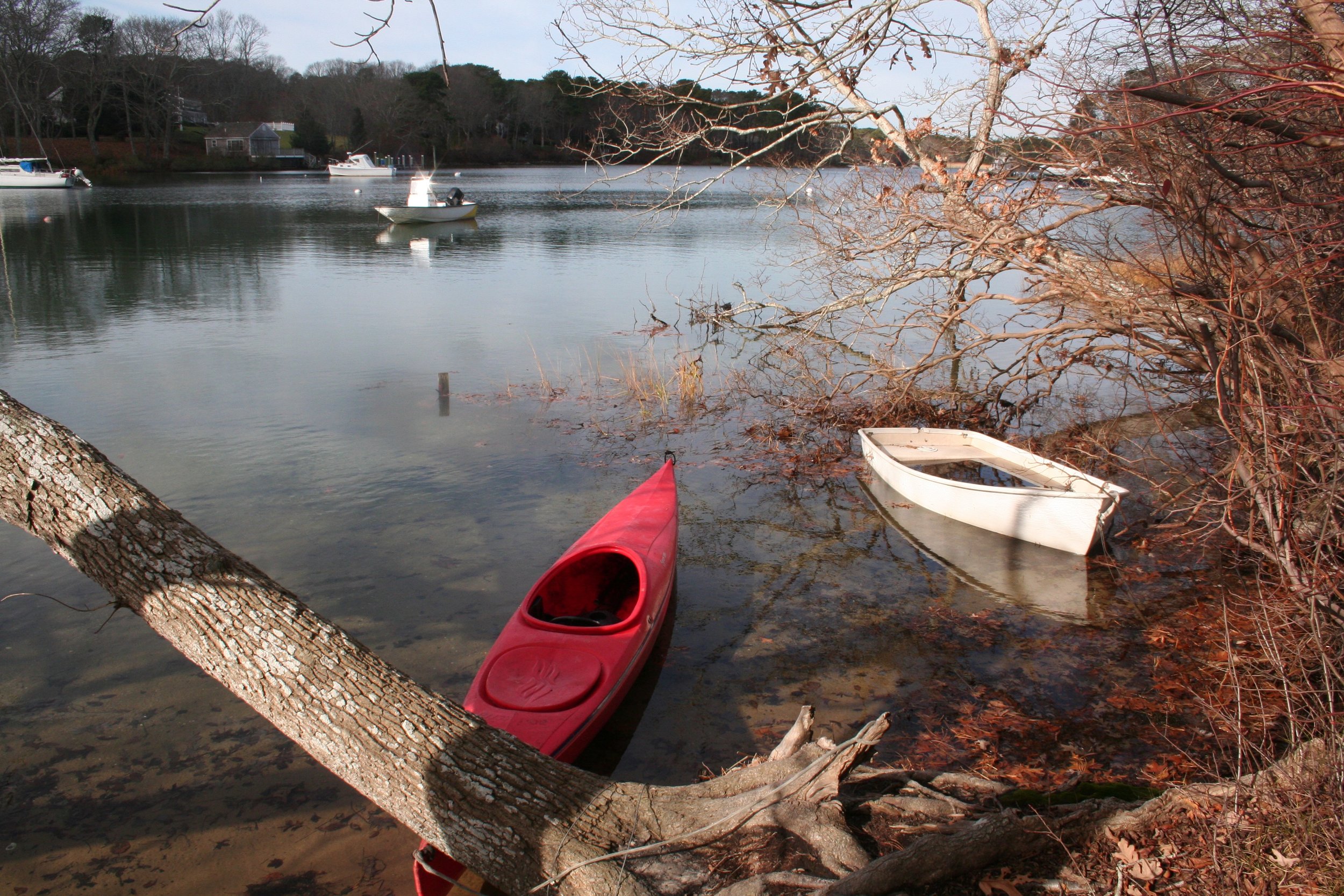
TWI Water Testing
West Spring Street Stormwater System
TWI has a long history of advocating for mitigation of storm water pollution entering our waterways. Since the late 1990’s, one focus has been on the stormwater drainage system along W. Spring St., extending from the Tisbury School to the outfall into Lake Tashmoo.
When we examined the outfall in 2020 we found a tree growing in the middle and serious erosion below. (See photo on left.)
W. Spring St. Follow up
Between July, 1996 and September, 1997, TWI collaborated with DPW on the installation of 12 “first flush basins” along West Spring St. This project, spearheaded by Dr. James Porter of TWI, was designed to capture bacterial, grease/oil, and heavy metal contaminants from the first 1/4 in of rainfall, removing it from the stormwater that eventually discharges into Lake Tashmoo.
While proven effective immediately after installation, there’s no evidence that these structures were maintained. With this in mind, TWI was concerned about potential pollutants spilling into Lake Tashmoo..
During 2020 and 2021, Bob Landreth, then an active TWI volunteer and now a member of TWI’s Board, collected samples from the W. Spring stormwater outfall and areas of Lake Tashmoo where the stormwater empties into the Lake. Samples were tested for bacterial levels at the Wampanoag Lab in Aquinnah. Bob found high to very high bacterial levels in these samples.
The south end of Lake Tashmoo is closed year-round to shell fishing by the Mass Department of Marine Fisheries (DMF). In a meeting with the TWI Board during Spring 2021, DMF staff noted that they have substantial data showing high levels of fecal coliform bacteria at the head of Tashmoo near where the stormwater outfall empties. Therefore, they no longer test there frequently.
TWI recognizes that there is no overnight fix for Tashmoo’s intermittent high bacteria levels. However, we are not satisfied with an assumption of bacterial pollution. We would like to establish the source of this pollution and work with the Town to address it.
Two potential bacterial sources to the head of Lake Tashmoo are the W. Spring St. stormwater system and the population of Canada geese. To distinguish between these, in September 2021, TWI arranged for Microbial Source Testing(MST) at the University of New Hampshire. MST is a polymerase chain reaction
(PCR) test that specifically looks for markers identifying the source of the bacteria (e.g., human, other mammal, bird).
TWI was surprised to find very high levels of human markers, with levels similar to those from septic output. No bird contribution was found. We also established that the bacteria originated from the W. Spring St. stormwater collection system that originates near the Tisbury School. Earlier in the summer, Bob Landreth’s bacterial testing had shown high levels near the school.
These results were reported in October to the Tisbury Board of Health. The BOH is now working with staff from the Tisbury Wastewater Treatment Facility to identify the source of this pollution. As a result of TWI’s actions, the BOH has required replacements for at least 5 failed septic systems in the area..
